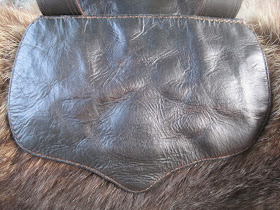 |
| Art work by: Gary Zaboly |
At 2:30 a.m. on July 31, Dalyell began his intended surprise attack on the Indian encampment. However, Pontiac had learned of Dalyell’s plan (perhaps from the French settlers) and gathered more than 400 men to fight the British. Pontiac ordered nearly half the men to hide on the opposite side of a narrow bridge called Parent's Creek, two miles east of Fort Detroit, below Pontiac's encampment. As the British troops, some 200 soldiers, attempted to cross the bridge over Parent’s Creek, they fell to a vicious crossfire.
Gunfire erupted from all sides devastating the British. Dalyell realized his plan was destined to fail and called for a retreat. Unfortunately, the call came too late. The only hope left for the British was to charge their way out of the battle. Dalyell and about sixty of his men were killed as a result of the fire fight. Robert Rogers and a small group of rangers along with the help of to small boat armed with swivel guns out on the Detroit river supplied cover for the rest of the British troops to retreat.
There was so much blood spilled in the battle that the water in Parent’s Creek appeared red. The Creek became known as Bloody Run. This battle marked the height of Chief Pontiac’s siege of Detroit, which he was forced to abandon three months later.
After learning of Dalyell's death, General Jeffery Amherst offered a £200 bounty to anyone who would kill Pontiac.

















